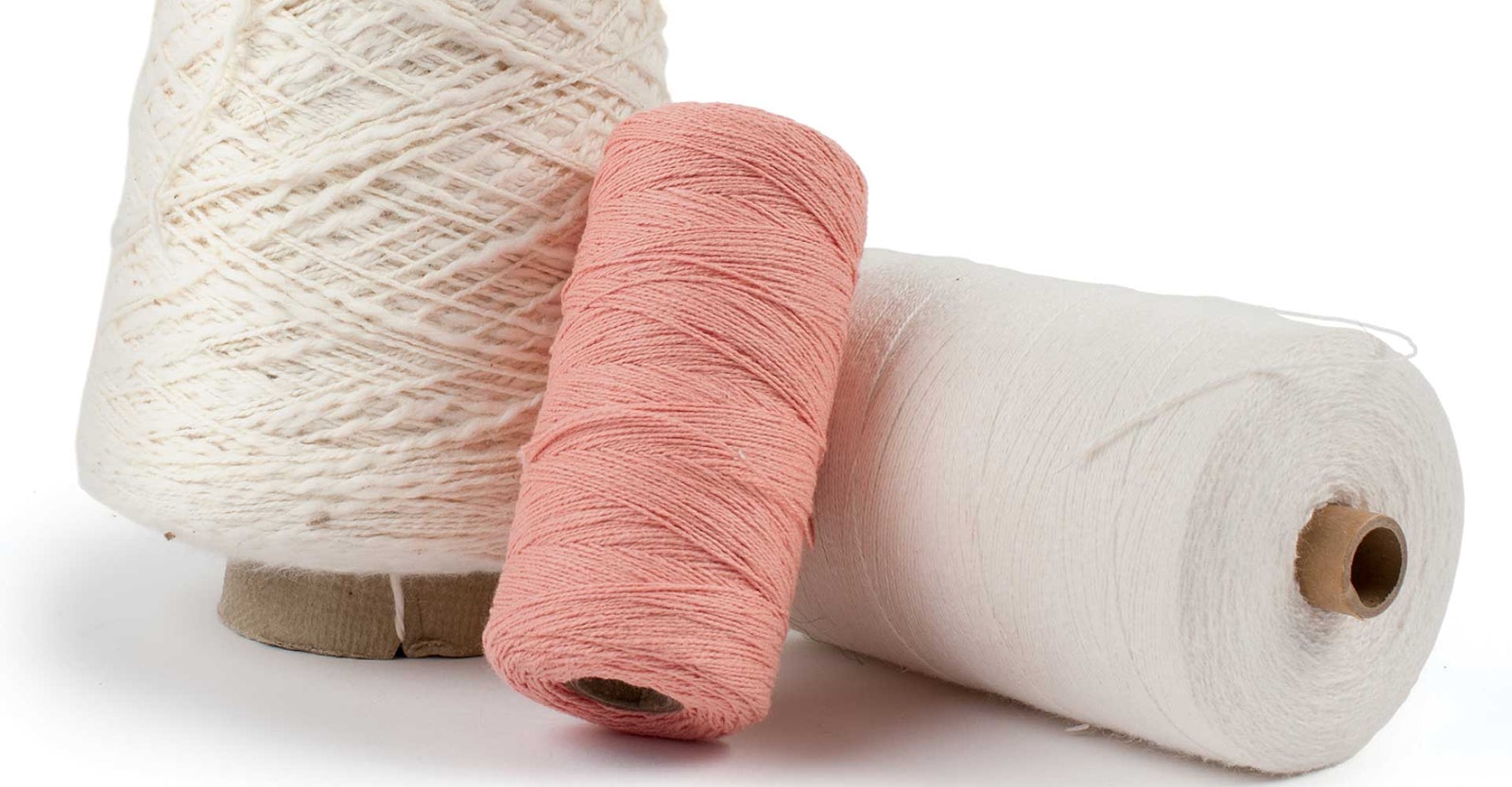In this Yarn Lab from Handwoven September/October 2014, Laura Fry looks at the different factors that contribute to absorbency or lack of absorbency, important factors when weaving towels. The flake cotton she mentions using as weft is no longer available but slub cotton of the same weight can be purchased from Maurice Brassard & Fils in Canada, or from various yarn companies in the U.S., including Lunatic Fringe Yarns and The Woolery. - Susan
Cotton fibers are consistently rated high in absorbency, so why is it that some cotton yarns—and cotton towels for that matter—are so much less absorbent than others? To answer that question, we need to first look at how cotton fibers absorb water and how spinning and weaving will affect the ability of the fiber to be absorbent. Change one thing and everything can change.
Cotton fibers come from the seedpod (or boll) of the cotton plant. The fiber is a tube, closed at the tip and open at the base. Once harvested, the tube collapses and develops a few twists along the length of the staple. To absorb water, the fiber once again swells into a tube.

Plain weave at 15 epi absorbed the most of the plain weave samples
Fibers are generally prepared for spinning in one of two ways: Either the individual fibers are lined up parallel to all the other fibers, or they are left in random order. If you think of a stack of spoons nesting together (parallel), there isn’t a lot of air space between the spoons. Likewise fibers that are aligned in parallel don’t have much room to swell from flat back into round tubes. If the parallel fibers are then twisted tightly together, there is even less room for the fibers to swell and absorb water. A thinner yarn will be more absorbent than a fat one because it has fewer fibers and is therefore less resistant to absorbing water.

Twill at 20 epi absorbed the most of all the twill samples and is Laura’s choice for dish towels
In woven fabric, absorbency depends on how densely the yarns are sleyed (ends per inch) and woven (picks per inch). The higher the density, the less space there is for the fibers to swell. The weave structure also affects absorbency. Plain weave has the maximum number of intersections. If each intersection is seen as a point of resistance, then plain weave would be less absorbent than any other weave structure. Longer floats mean more of the yarn— and therefore more of the fiber— is available to soak up the water.

Huck lace at 18 epi. Regardless of epi, all the huck lace samples absorbed 70 grams of water weight.
One of my favorite yarn combinations for towels is a warp of 2/8 ring-spun cotton with a weft of cotton flake. These yarns come from Maurice Brassard & Fils in Quebec, Canada. A yarn similar to the 2/8 ring-spun cotton can be found in the United States, where it is referred to as 8/2 cotton. I have not yet found a U.S. source for this weight of cotton flake— 3,750 yards per pound—but it can be found at Maurice Brassard & Fils.
For the purpose of this study, I wove several samples: five in plain weave, three in 2/2 twill, three in huck lace, and three in waffle weave. After weaving, I wet-finished the cloth using a small amount of detergent and hot water followed by a cold rinse, and then gave it a hard-press. I cut the samples to about the same size and weighed each sample for approximate dry weight.

Waffleweave at 18 epi absorbed the most of any sample, in any structure. However, the longer floats also result in a towel that may wear out faster than twill or plain weave.
To test absorbency, I prepared a basin with fairly warm water and a small amount of detergent (Dawn dish soap) to break down the surface tension of the water so that the fibers could more readily absorb the water. I laid each sample on the surface of the water and timed to see how long it took for the sample to absorb enough water to sink to the bottom of the basin. I then removed the sample from the basin and weighed it. I subtracted the dry weight of the sample from this new wet weight and from there could figure out roughly how much water each sample absorbed.

Final Thoughts
Before a winning towel weave is declared, there is one more factor to consider: that of functionality. In my opinion, towels should be thin and flexible enough to get into tight corners, they should not feel wet quickly, and they should last for a long time—not wear out in a year or two. To make a good towel, I must strike a balance between a thin, more absorbent yarn at a sett that allows movement and has a flexible, absorbent weave structure versus the durability of a thicker yarn, a denser sett, and a more stable weave structure. Taking into account these tradeoffs, I would not use this yarn for towels at 15 ends per inch in plain weave. The cloth would feel wet quickly, would not be stable (it would catch on fork tines, for example.), and would not wear very well. My preferred combination with these yarns is 20 ends per inch in twill. One final observation is that some of the samples took longer to dry than others; for example, the waffle-weave samples took longer than the huck lace samples to dry. I didn’t evaluate how this correlates with absorbency, but if you live in a damp climate, it may be something to consider.

